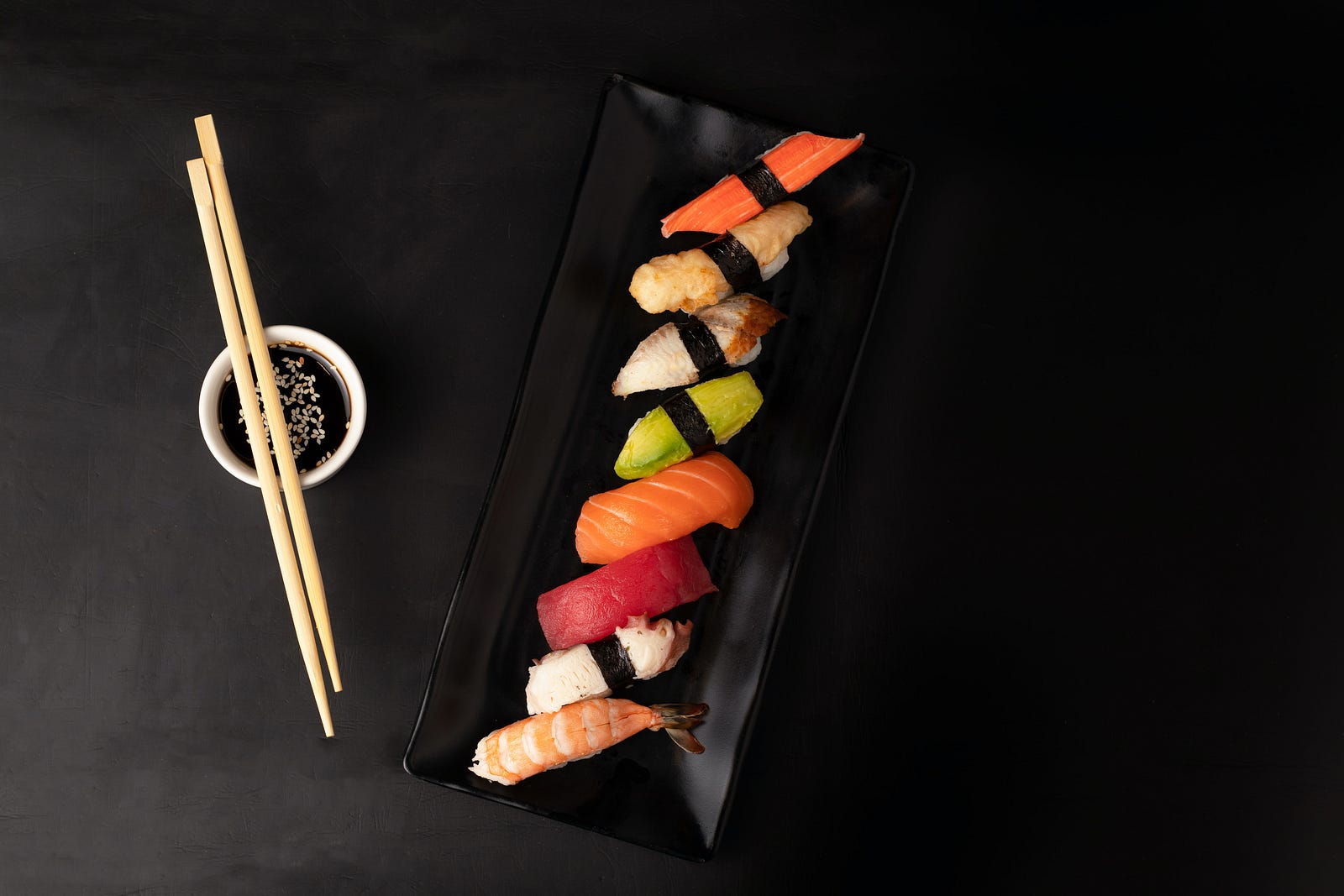JAPANESE PEOPLE TEND TO STAY THIN AND HEALTHY. Have you ever wondered why? Today, I offer my traveler’s tale: Cracking the code to Japanese wellness.
In this article, I want to explore why Japanese people tend to stay thin and healthy and offer some insights into their way of life that contribute to their wellness.
No, I am not going to write about eating sushi. I wouldn’t say I like the food.
Nor will I delve into the nuances of karate, even as a practitioner.
Instead, I will explore three key aspects of Japanese lifestyle and culture contributing to their health and slim figures.
Fewer Calories
The average daily intake of an Okinawan is only approximately 1,900 calories. This amount is much less than the average consumed by a typical American, especially those who are middle-aged.
According to the U.S. Drug Administration, the average American man consumes over 2500 calories. His food intake peaks in his 40s, reaching a remarkable average of 2692 calories.
For women, the same trend holds. The average American woman takes in 1766 calories daily. Women in their 40s consume more than any other age group, with an average daily consumption of 1879 calories.
Here’s the problem: The Mayo Clinic Calorie Calculator shows that an average-sized 40-year-old woman only needs 1500 to 1700 calories daily to maintain a healthy body weight. She will need more if she does physical exercise most days.
Men need 1900 to 2150 calories to maintain an average-sized frame.
Fast Food
One of the first things I noticed in Japan was how people approached their meals. It was a stark contrast to the fast-food culture I know.
In America, it sometimes seems like a McDonald’s (or Starbucks) is on every corner.

There are 13,523 McDonalds restaurants in the United States as of October 31, 2023. California has the most McDonald’s locations in the U.S., with 1,218 restaurants, about 9 percent of all McDonald’s restaurants in the U.S.
We grab fast food because it’s quick and convenient. Rarely do I hear the words delicious.
Japanese Food Practices
On the other hand, Japanese people take time to savor their food, paying attention to every bite.
Don’t get me wrong: There are McDonald’s in Japan. I quickly learned that only young people ate there, and only occasionally for most.
This practice of mindful eating can make a significant difference in maintaining a healthy weight.
Mindfulness Eating
A small United Kingdom study illustrates how mindfulness eating can reduce binge eating (and mood disturbances) among university students.

When you eat more slowly and appreciate each flavor, you are more likely to recognize when you’re full, preventing overeating.
Japanese meals also tend to be well-balanced, featuring a variety of foods rich in nutrients. This emphasis on a balanced diet is a key factor in Japanese wellness. I discovered that the Japanese eat more slowly than their American counterparts.
Here’s what I previously wrote about mindfulness eating:
“Mindful eating is a practice that involves paying deliberate attention to the eating experience, free from judgment or distraction.
I like that the mindful eating approach involves engaging all the senses, such as sight, smell, taste, touch, and sound, while consuming food.”
Size Matters
One of the most shocking things I noticed in Japan was the difference in food product sizes.
The large fountain drink container at a Japanese McDonald’s is smaller than the large one here. Moreover, while Americans are used to getting free refills, they are verboten in Japan.
Check out these soda comparisons:

If you ask for more ketchup at a McDonald’s in the U.S., the workers don’t flinch.
But in Japan, they aren’t accustomed to giving customers more than what comes with the order. Special orders can make the staff uncomfortable. Americans are generally accustomed to consuming more food and drink than Japanese people.
Order Customization
In the United States, we commonly customize our orders. Here’s an example of an extremely complex order you might have in the States:
Name: “Galactic Mocha Fusion”
Base Drink: Venti White Chocolate Mocha
Espresso Shots: 4 shots of espresso for that extra kick
Milk: 2/3 whole milk, 1/3 coconut milk
Flavor Syrups: 1 pump of Vanilla, 1 pump of Hazelnut, 1 pump of Raspberry
Whipped Cream: Lightly whipped cream on top, infused with a hint of cinnamon and matcha powder
Toppings: Chocolate shavings and crushed pistachios
Ice: Light ice for a refreshing touch
Special Instructions: Ask the barista to steam the mild at exactly 160°F for the perfect temperature blend.
I hope that I got a chuckle out of you.
Good luck customizing in Japan. It’s more challenging.
Most Japanese diners choose what’s on the menu without changing anything.
Japanese workers may need clarification if you request a change to your order. They will likely do it for you but might be a little puzzled.
Active Lifestyle
Japanese people often incorporate physical activity into their daily lives, even without formal exercise routines.
I observed people walking and cycling as part of their daily commute, which helps keep them active and fit.
A study published in the American Journal of Public Health found this: The Japanese culture of active commuting, such as walking or cycling to work or school, significantly contributes to combating childhood obesity.
These practices help manage weight and positively impact cardiovascular health and overall fitness.
Traditional Practices
In addition to active commuting, I also noticed the importance of maintaining traditional practices, such as martial arts and gardening.
These activities keep people physically active and serve as stress-relief mechanisms.

Like judo and karate, practicing martial arts helps improve flexibility, strength, and mental discipline.
Gardening is another popular pastime in Japan, promoting outdoor activity and a connection to nature.
Eat Until You Are 80 Percent Full
Japan’s Portion sizes are generally smaller than those in many Western countries. Smaller portion sizes not only reduce calorie intake but also help in preventing overeating.
Japanese people have a cultural practice called “Hara Hachi Bu,” which means eating until 80 percent full.
It’s a principle of portion control that encourages people to listen to their bodies and stop eating when they are satisfied rather than full.
Hara Hachi Bu aligns with research on mindful eating, as it promotes awareness of one’s hunger and fullness cues.
Hara Hachi Bu: Enjoy Food and Lose Weight With This Simple Japanese Phrase
Americans are always trying to drop excess weight. But the key to successful weight loss may be found halfway around…www.bluezones.com
Hara Hachi Bu: Getting Started
Get started with these easy tips.
- Eat more slowly. Eating faster leads to greater consumption. Slow down and let your body respond to cues that signal you are no longer hungry.
- Focus on food. Turn off the computer and television. Just eat. There is a good chance that your eating will slow, allowing you to enjoy food more and eat less.
- Use small plates. In my home, I am always surprised how many small plates sit on the table, each with small volumes of food. Smaller plates can help you to eat less.
Conclusion – Japanese Code To Wellness
My travels in Japan provided valuable insights into the Japanese approach to wellness and maintaining a slim figure.
Combining mindful eating, an active lifestyle, and portion control is key to their success. These practices are not only essential for staying slim but also for promoting overall health and well-being.
Adopting some of these principles can improve our eating habits, stay active, and maintain a healthier weight.
So, the next time you enjoy a delicious plate of sushi or a bowl of miso soup, remember the wisdom of the Japanese approach to wellness.
One More Thing – Japanese Code To Wellness
The Japanese traditional diet (washoku) is characterized by a high consumption of fish and soybean products and a low consumption of animal fat and meat.
The diet relies on the effective use of umami taste to enhance palatability. There may be a link between Washoku and Japanese longevity.
Thank you for reading “Japanese Code To Wellness.” Interested in learning more? Please try this:




